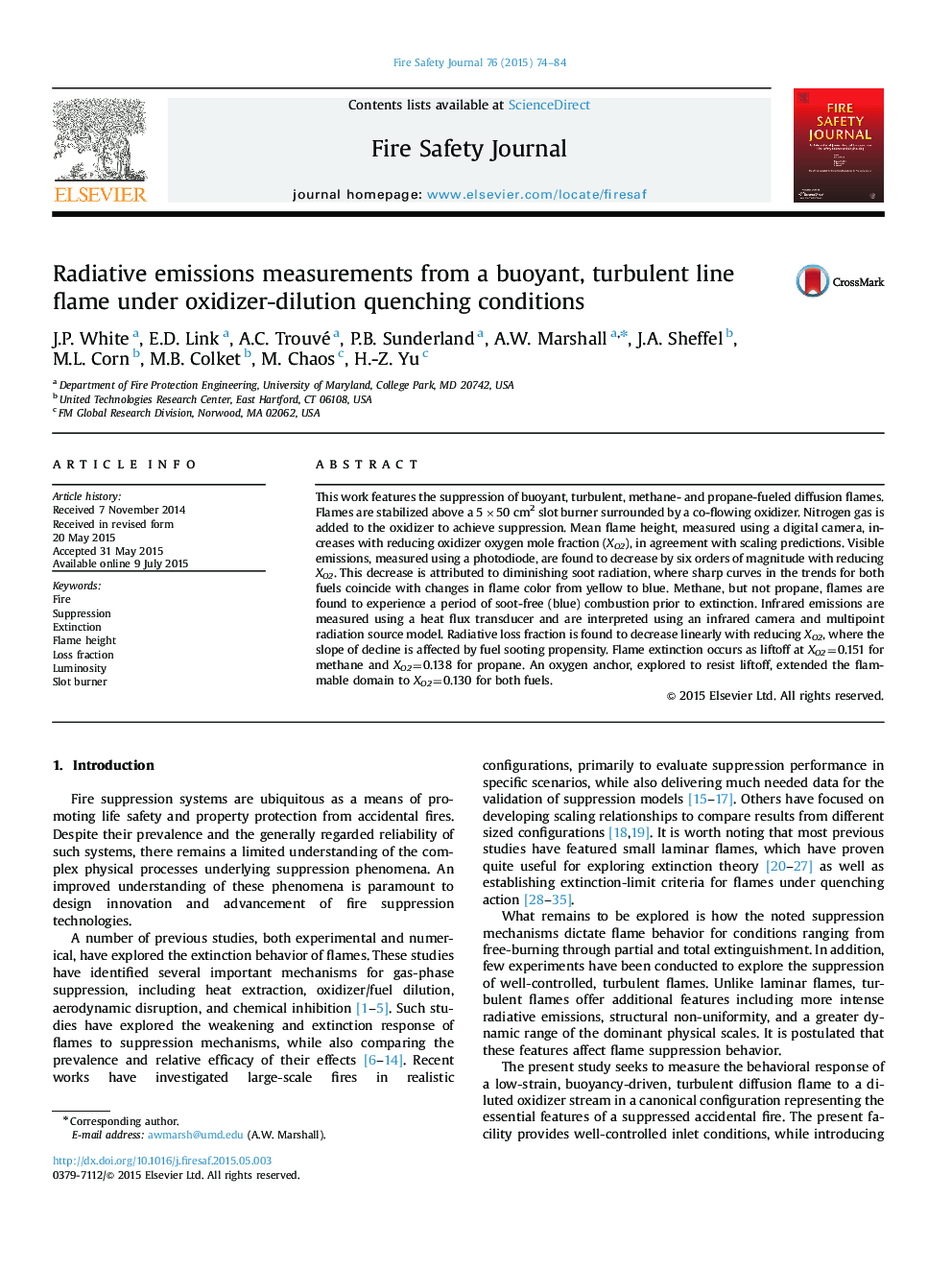| Article ID | Journal | Published Year | Pages | File Type |
|---|---|---|---|---|
| 269758 | Fire Safety Journal | 2015 | 11 Pages |
•Methane- and propane-fueled diffusion flames are suppressed via oxidizer dilution.•Flame height increases with suppression, in agreement with scaling predictions.•Visible emissions decrease by six orders of magnitude due to diminishing soot.•Radiative loss fraction is found to decrease linearly with suppression.•Methane, not propane, flames experience soot-free combustion prior to extinction.
This work features the suppression of buoyant, turbulent, methane- and propane-fueled diffusion flames. Flames are stabilized above a 5×50 cm2 slot burner surrounded by a co-flowing oxidizer. Nitrogen gas is added to the oxidizer to achieve suppression. Mean flame height, measured using a digital camera, increases with reducing oxidizer oxygen mole fraction (XO2), in agreement with scaling predictions. Visible emissions, measured using a photodiode, are found to decrease by six orders of magnitude with reducing XO2. This decrease is attributed to diminishing soot radiation, where sharp curves in the trends for both fuels coincide with changes in flame color from yellow to blue. Methane, but not propane, flames are found to experience a period of soot-free (blue) combustion prior to extinction. Infrared emissions are measured using a heat flux transducer and are interpreted using an infrared camera and multipoint radiation source model. Radiative loss fraction is found to decrease linearly with reducing XO2, where the slope of decline is affected by fuel sooting propensity. Flame extinction occurs as liftoff at XO2=0.151 for methane and XO2=0.138 for propane. An oxygen anchor, explored to resist liftoff, extended the flammable domain to XO2=0.130 for both fuels.
